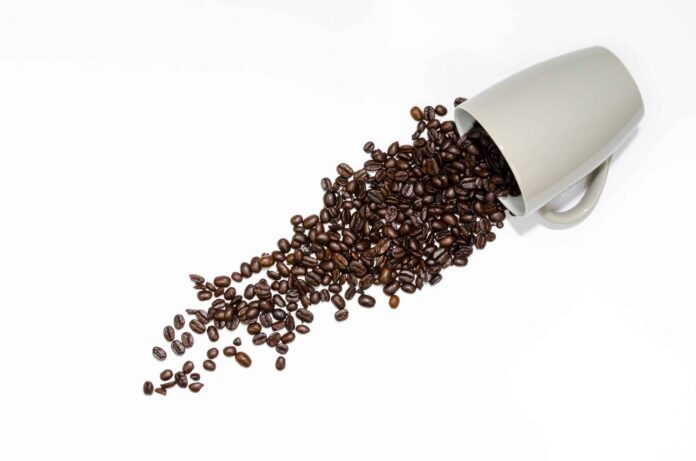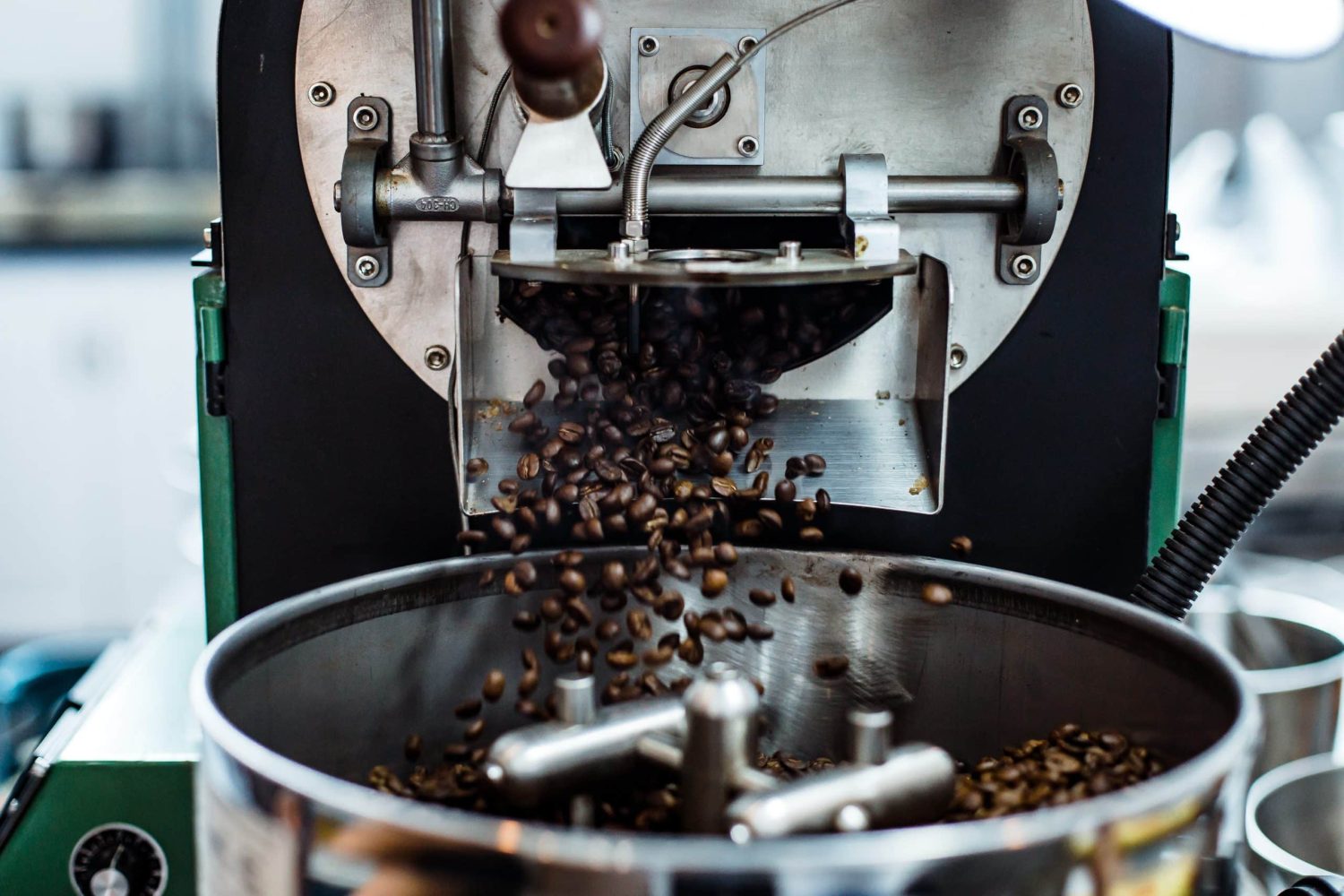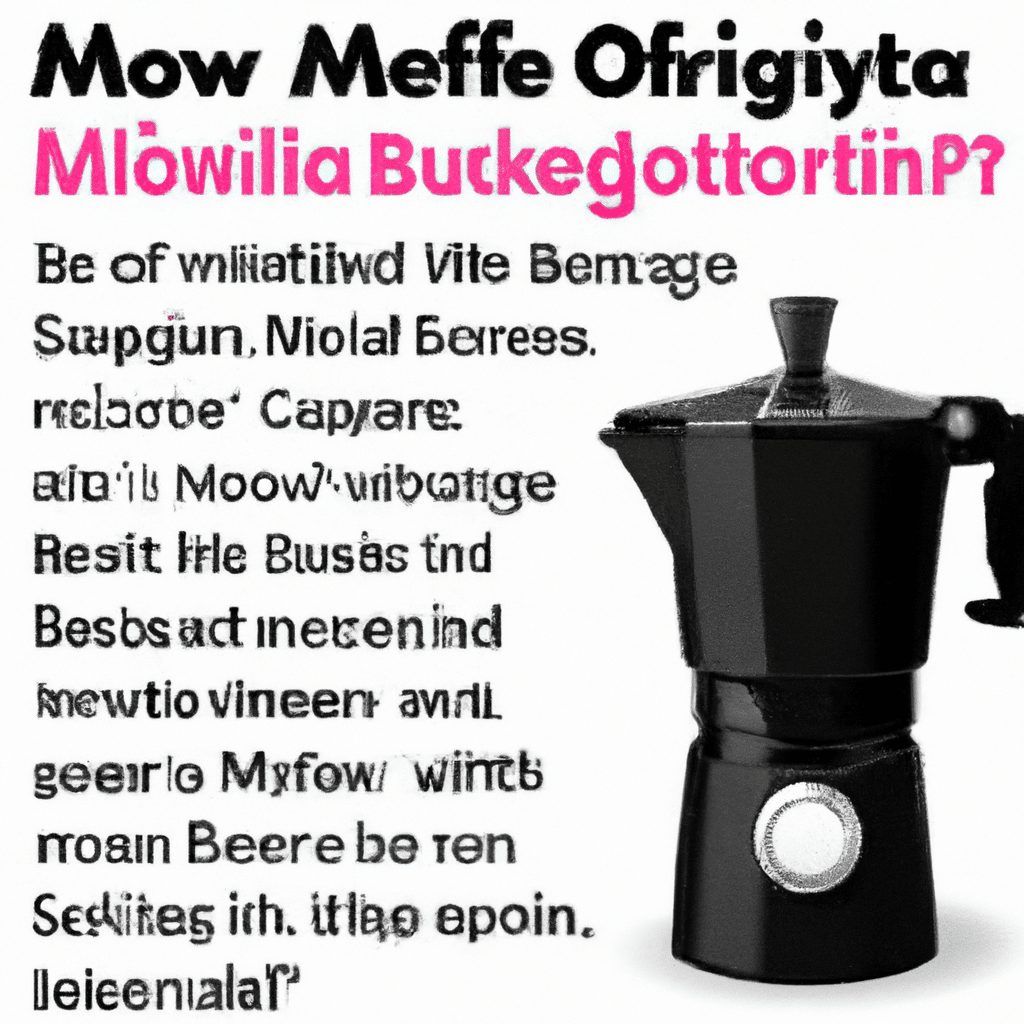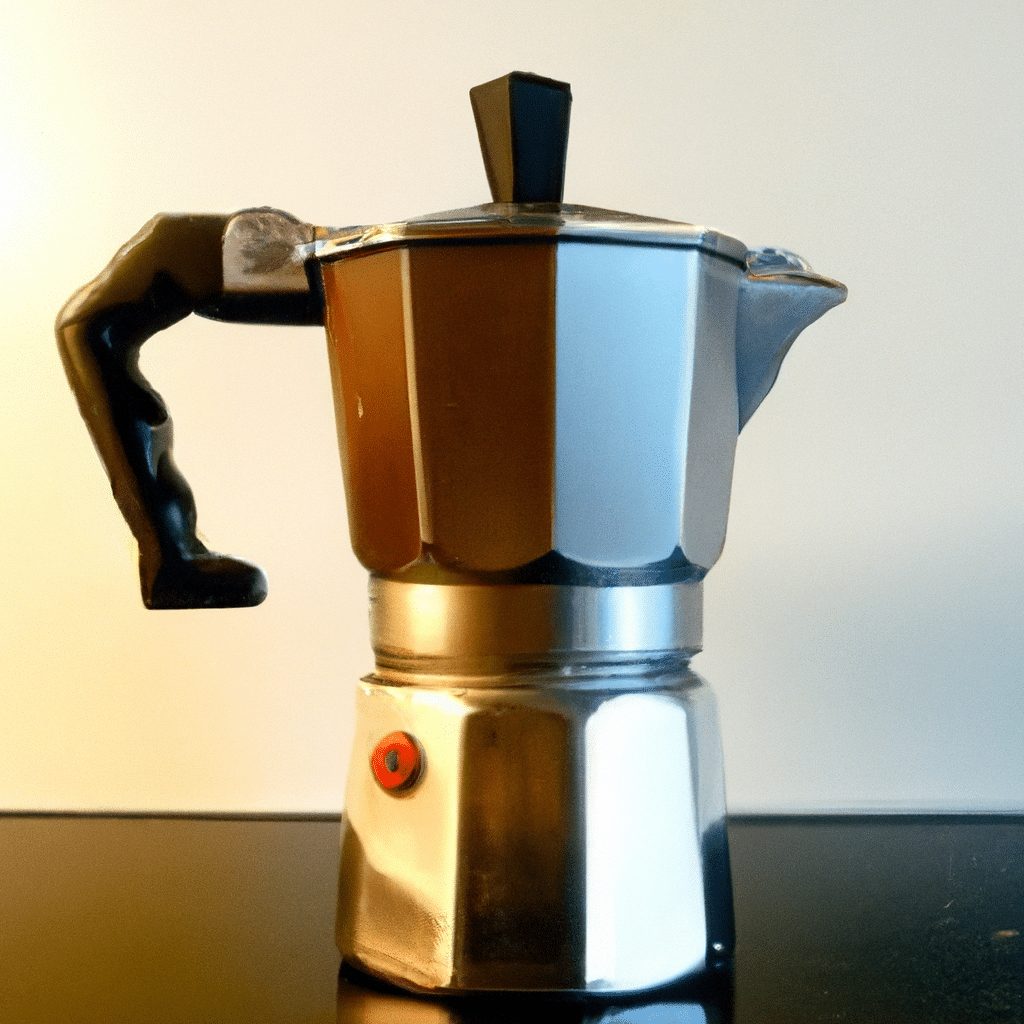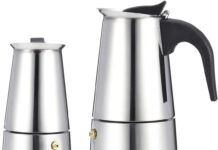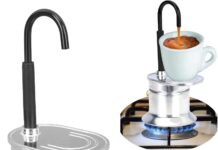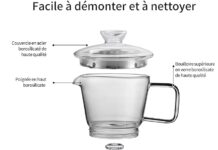There’s nothing quite like the aroma of freshly brewed coffee to start the day off right, and for many coffee enthusiasts, the search for the perfect brewing method is an ongoing quest. In this article, we explore the age-old question: Are Moka pots worth it? These stovetop coffee makers, known for their distinctive shape and rich flavor, have a loyal following, but do they live up to the hype? Join us as we take a closer look at the pros and cons of Moka pots and discover if they truly deliver the perfect cup of joe.
What is a Moka Pot?
A Moka pot, also known as a stovetop espresso maker, is a traditional Italian coffee brewing device that produces strong and flavorful coffee. It consists of three main parts: a bottom chamber for water, a middle chamber for ground coffee, and a top chamber for the brewed coffee.
History and Origin of Moka Pots
The Moka pot was invented in the 1930s by Alfonso Bialetti, an Italian engineer. Bialetti’s goal was to create a coffee maker that could produce a rich, espresso-like coffee at home without the need for expensive equipment. The Moka pot quickly gained popularity in Italy and later spread to other parts of the world, becoming a beloved and iconic coffee brewing method.
This image is property of images.unsplash.com.
How Does a Moka Pot Work?
The operation of a Moka pot is relatively simple. Water is poured into the bottom chamber, and the ground coffee is placed in the middle chamber, which is then screwed onto the bottom chamber. The Moka pot is placed on a stovetop, and as the water heats up, steam is generated, creating pressure that pushes the hot water through the coffee grounds and into the top chamber. The result is a strong, concentrated coffee that resembles espresso.
Different Sizes and Designs of Moka Pots
Moka pots come in various sizes, typically ranging from 1 to 12 cups. The size refers to the amount of brewed coffee the pot can produce. It’s important to note that a “cup” in Moka pot terms is smaller than a standard 8-ounce cup. Moka pots also come in different designs, with traditional aluminum pots being the most common. However, stainless steel and even electric versions are also available, offering more durability and convenience.
This image is property of images.unsplash.com.
Pros of Using a Moka Pot
Strong and Flavorful Coffee
One of the main advantages of using a Moka pot is the intense and robust flavor it produces. The pressure generated during brewing extracts the coffee’s oils and essential compounds, resulting in a bold and concentrated brew that can rival the flavors of espresso.
Affordable and Cost-Effective
Compared to other coffee brewing methods, Moka pots are relatively inexpensive. They require no electricity or expensive equipment, making them a cost-effective option for coffee lovers who want to enjoy quality coffee without breaking the bank.
Easy to Use and Clean
Using a Moka pot is a straightforward process that doesn’t require any complex techniques or skills. Once the water and coffee are added, the pot is placed on the stovetop, and the brewing process begins. Cleaning a Moka pot is also relatively easy, as most models can be disassembled and washed by hand.
Portable and Suitable for Travel
Moka pots are compact and lightweight, making them ideal for travel or camping adventures. With a portable stovetop or portable electric burner, coffee enthusiasts can enjoy their favorite brew wherever they go, without relying on coffee shops or bulky coffee machines.
Aesthetically Pleasing Design
Moka pots have a classic and timeless design that adds a touch of elegance to any kitchen. Their sleek curves and polished finishes make them a beautiful addition to the countertop or stovetop, enhancing the overall aesthetics of the space.
Cons of Using a Moka Pot
Learning Curve for Beginners
While using a Moka pot is relatively simple, there is a slight learning curve involved, especially for beginners. Achieving the perfect balance of water temperature, grind size, and brewing time may take a few tries to master. However, with practice and experimentation, users can quickly become proficient in brewing coffee with a Moka pot.
Requires Monitoring and Attention
Unlike automatic coffee makers, Moka pots require constant monitoring during the brewing process. It’s vital to ensure the heat level is correctly adjusted, as too high heat can result in burned coffee, while too low heat can lead to under-extraction. This hands-on approach may not be ideal for those who prefer a more set-it-and-forget-it brewing method.
Risk of Overheating or Burning Coffee
Due to the stovetop brewing process, there is a risk of overheating or burning the coffee in a Moka pot. Forgetting to remove the pot from the heat source once the coffee has brewed can result in an unpleasant burnt taste. It’s essential to be mindful of the brewing time and promptly remove the pot from the stovetop to avoid this issue.
Limited Brewing Capacity
Although Moka pots come in different sizes, their brewing capacity is still limited compared to other brewing methods. This can be a drawback for large households or when entertaining guests, as multiple batches may be required to satisfy everyone’s coffee needs.
This image is property of images.unsplash.com.
Comparing Moka Pots with Other Brewing Methods
Moka Pot vs. French Press
When comparing a Moka pot to a French press, both methods produce strong and flavorful coffee, but there are notable differences. While a Moka pot uses pressure to brew coffee, a French press uses immersion brewing. A Moka pot produces a coffee similar in strength and flavor to espresso, while a French press yields a full-bodied, rich cup. The choice between the two methods ultimately depends on personal preference for taste and brewing process.
Moka Pot vs. Drip Coffee Maker
A Moka pot and a drip coffee maker serve different purposes and have different brewing processes. A Moka pot brews concentrated coffee using pressure, while a drip coffee maker produces a standard brewed coffee using a filter and gravity. A Moka pot is suitable for those who enjoy a stronger, bolder cup of coffee, while a drip coffee maker is ideal for those who prefer a milder, less concentrated brew.
Moka Pot vs. Espresso Machine
While both produce coffee with a similar strength and flavor profile, there are significant differences between a Moka pot and an espresso machine. An espresso machine uses a high-pressure system and finely ground coffee to extract coffee oils and achieve crema. In contrast, a Moka pot doesn’t create the same level of pressure and doesn’t produce crema. Additionally, espresso machines are generally more expensive and require more skills and knowledge to operate compared to Moka pots.
Factors to Consider
Personal Taste Preference
When deciding whether a Moka pot is worth it, personal taste preference is crucial. If you enjoy strong and bold coffee with rich flavors, a Moka pot may be a perfect fit. However, if you prefer milder, less concentrated brews, other brewing methods may be more suitable.
Convenience and Time
Consider the convenience and time required for brewing coffee with a Moka pot. While it may take a few minutes for the brewing process itself, the monitoring and attention needed may not be suitable for those who prefer a quick and hassle-free brewing experience.
Budget and Cost
A Moka pot is a cost-effective coffee brewing method compared to more expensive options like espresso machines. It’s an excellent choice for those on a budget or looking to save money on their daily caffeine fix.
Space and Storage
Consider the space available in your kitchen or storage area when deciding on a Moka pot. While compact, they still require storage space when not in use. If kitchen counter space is limited, a smaller-sized Moka pot or a collapsible version may be more suitable.
Tips for Using a Moka Pot
Choosing the Right Coffee Grind
Selecting the correct coffee grind size is essential for optimal extraction in a Moka pot. A finer grind is generally recommended, similar to that used for espresso machines. However, it’s crucial to avoid using overly fine coffee grounds, as this can lead to clogging and prevent proper water flow during brewing.
Filling the Water Chamber Correctly
Ensure the water chamber of the Moka pot is filled to the appropriate level. Overfilling can cause pressure issues, while underfilling can result in a burnt taste. Follow the manufacturer’s instructions and guidelines for the specific model you are using.
Applying the Right Heat Level
Find the right heat level when using a Moka pot. Too high heat can lead to burnt coffee, while too low heat can result in under-extraction. Medium heat is generally recommended, but adjustments may be necessary depending on the stovetop’s power and the specific Moka pot being used.
Preventing Coffee from Overheating
To prevent the coffee from overheating or burning, it’s crucial to remove the Moka pot from the heat source promptly once the brewing process is complete. This helps avoid the unwanted burnt taste and ensures the coffee retains its optimal flavors.
Cleaning and Maintenance
Regular cleaning and maintenance are essential to keep a Moka pot in good working condition. After each use, rinse the components with warm water and mild detergent. It’s important to thoroughly dry each part to prevent any residual moisture or odors. Periodically, deep clean the Moka pot and descale it to remove any mineral buildup, which can affect the coffee’s taste.
Common Mistakes to Avoid
Using Overly Fine Coffee Grounds
While a fine grind is generally recommended for a Moka pot, using overly fine coffee grounds can result in clogged filters and slow water flow. This can ultimately lead to an under-extracted and weak coffee. Experiment with the grind size to find the right balance for optimal extraction.
Tightly Packing the Coffee Chamber
Avoid tightly packing or tamping the coffee grounds in the chamber of a Moka pot. Unlike espresso machines, a Moka pot relies on the natural pressure created by steam and water to extract flavors. Tamping the coffee can impede the water flow and negatively impact the brewing process.
Using High Heat Throughout Brewing
Using high heat throughout the entire brewing process can cause the coffee to burn and result in a bitter taste. It’s important to start with medium heat, allowing the water to gradually heat up and maintain the ideal brewing temperature. Adjust the heat as needed to ensure the coffee doesn’t overheat.
Cleaning and Caring for a Moka Pot
Daily Cleaning Routine
After each use, rinse the Moka pot’s components with warm water and mild detergent. Use a soft brush or cloth to remove any residue or coffee grounds. Thoroughly dry each part before reassembling to prevent any odors or moisture buildup.
Deep Cleaning and Descaling
Periodically, deep clean the Moka pot to remove any mineral buildup that can affect the taste of the coffee. Fill the bottom chamber with equal parts water and vinegar and let it sit for about 15-30 minutes. Rinse thoroughly with water and repeat the rinsing process to ensure no vinegar residue remains.
Storing the Moka Pot Properly
When not in use, ensure the Moka pot is completely dry to prevent any mold or mildew growth. Store it in a cool, dry place away from direct sunlight to preserve its performance and extend its lifespan.
Reviews and Opinions
Opinions of Coffee Enthusiasts
Coffee enthusiasts often praise the Moka pot for its ability to produce a strong and flavorful brew that rivals espresso. Many appreciate the simplicity of the brewing process and the rich, concentrated coffee it delivers. Some enthusiasts also enjoy the experience of manually brewing coffee and the control they have over the factors that influence the taste.
Expert Reviews and Recommendations
Experts generally agree that Moka pots are a worthwhile investment for coffee lovers who enjoy bold and concentrated flavors. They highlight the affordability, ease of use, and portability as significant advantages. However, they also note the learning curve for beginners and the need for careful monitoring during the brewing process as potential drawbacks.
Conclusion
In conclusion, Moka pots offer a unique and enjoyable way to brew strong and flavorful coffee at home. With their simple design, affordability, and portability, they are a popular choice among coffee enthusiasts. While there may be a learning curve and some challenges to overcome, many find the rich and bold flavors produced by a Moka pot well worth the effort. Ultimately, the decision of whether or not a Moka pot is worth it depends on personal taste preferences, convenience, budget, and storage space. With proper care and attention, a Moka pot can be a valuable addition to any coffee lover’s kitchen arsenal.


